Tips for winter skin. The Ultimate Guide to Flawless Winter Skin: 7 Essential Tips
How to keep your skin healthy and glowing through the harsh winter months. Get expert advice on cleansing, moisturizing, exfoliating, and more to combat the drying effects of cold weather.
Hydrate from the Inside Out
When the temperatures drop, it’s easy to forget to stay hydrated. But maintaining proper hydration is crucial for keeping your skin healthy and glowing during the winter. Make sure to drink plenty of water throughout the day, and consider sipping on warming teas like ginger and lemon to boost your fluid intake. Staying hydrated from the inside out will help replenish moisture in your skin.
Choose Gentle, Nourishing Cleansers
Many commercial cleansers contain harsh chemicals and fragrances that can further dry out and irritate skin in the winter. Opt for cream-based, gentle cleansers that won’t strip away your skin’s natural oils. Look for products with moisturizing ingredients like this Neal’s Yard Frankincense cleanser to keep your complexion soft and supple.

Exfoliate with Care
Exfoliating is essential for removing dead, flaky skin cells, but it’s important not to overdo it during the winter. Use a natural, gentle scrub no more than 1-2 times per week to slough off dullness without causing further irritation. Try a homemade exfoliating scrub with ingredients like geranium and orange for a nourishing at-home treatment.
Limit Hot Water Exposure
It may be tempting to take long, hot showers or baths to warm up, but exposing your skin to excessive heat can actually strip away its natural oils and lead to dryness and irritation. Keep your bathing time short and the water temperature lukewarm to avoid this common winter skin woe.
Moisturize Immediately After Washing
Applying a rich, oil-based moisturizer or body butter right after cleansing is crucial for locking in much-needed hydration. Be sure to moisturize your entire body, paying extra attention to problem areas like hands and feet. If you’re out of lotion, try using versatile coconut oil for a deeply nourishing DIY treatment.

Bundle Up to Protect Skin
Harsh winter winds and low humidity can wreak havoc on delicate skin. Safeguard your complexion by bundling up with a scarf and gloves when heading outdoors. Opt for natural, breathable base layers to avoid irritation from rough winter fabrics.
Don’t Forget Sunscreen
Just because the sun isn’t shining as brightly doesn’t mean UV rays aren’t a threat. In fact, snow and ice can reflect up to 80% of the sun’s rays, putting exposed skin at risk for sunburn and long-term damage. Make sure to apply a broad-spectrum sunscreen with an SPF of at least 30 whenever you’ll be spending time outside, even in the winter.
What is the Most Important Tip for Winter Skin Care?
The single most important tip for maintaining healthy, glowing skin in the winter is to stay hydrated. Drinking plenty of water and using rich, moisturizing products are key to combating the drying effects of cold, harsh weather. By focusing on hydration from the inside out, you can keep your complexion soft, supple, and radiant all season long.

How Can I Easily Make a Nourishing DIY Exfoliating Scrub?
Creating a homemade exfoliating scrub is a simple and affordable way to pamper your skin during the winter. Mix together ingredients like sugar or salt, coconut oil, and essential oils like geranium or orange for a gentle, hydrating scrub that will leave your skin smooth and refreshed. You can customize the formula to suit your specific skin type and needs.
What is the Best Way to Protect My Hands and Lips from Winter Dryness?
Your hands and lips are especially vulnerable to the drying effects of winter weather, so give them some extra TLC. Stash a nourishing lip balm and a rich, creamy hand cream in your bag to apply throughout the day. Look for products formulated with moisturizing ingredients like shea butter, beeswax, or coconut oil to seal in hydration. Wearing protective gloves and a scarf can also help shield delicate skin from harsh winds.
Can I Still Use Sunscreen in the Winter?
Absolutely! Sunscreen is just as important in the winter as it is in the summer. The sun’s UV rays can still cause damage to unprotected skin, even when the weather is cold. Be sure to apply a broad-spectrum sunscreen with an SPF of at least 30 to your face, neck, and any other exposed areas before heading outdoors. Reapply every two hours, or immediately after sweating, to ensure optimal coverage.

7 Tips for Taking Care of Your Skin in Winter
Here at BuyMeOnce we believe in taking brilliant care of your possessions so that they serve you well for a lifetime, and your skin is no exception. Harsh winter weather can be damaging, uncomfortable and downright painful on your skin. Whilst there are some brilliant skincare brands out there (our favorite is Neal’s Yard by a mile) many products are superfluous, and can even do more harm than good.
Hard as it might be, resist that urge to panic-buy cupboard-fulls of lotions and potions following that first gust of bitterly cold winter wind! This mix of hydrating, natural products, home remedies and top tips to live by will keep your skin healthy, happy and glowing through the whole winter.
1. Drink lots of water.
When it’s cold outside we often forget to drink enough water throughout the day, but this is just when low humidity is most likely to strip our poor skin of its moisture. Remember to sip slowly through the day rather than gulp and to use a reusable bottle – our favourite is this one by Klean Kanteen.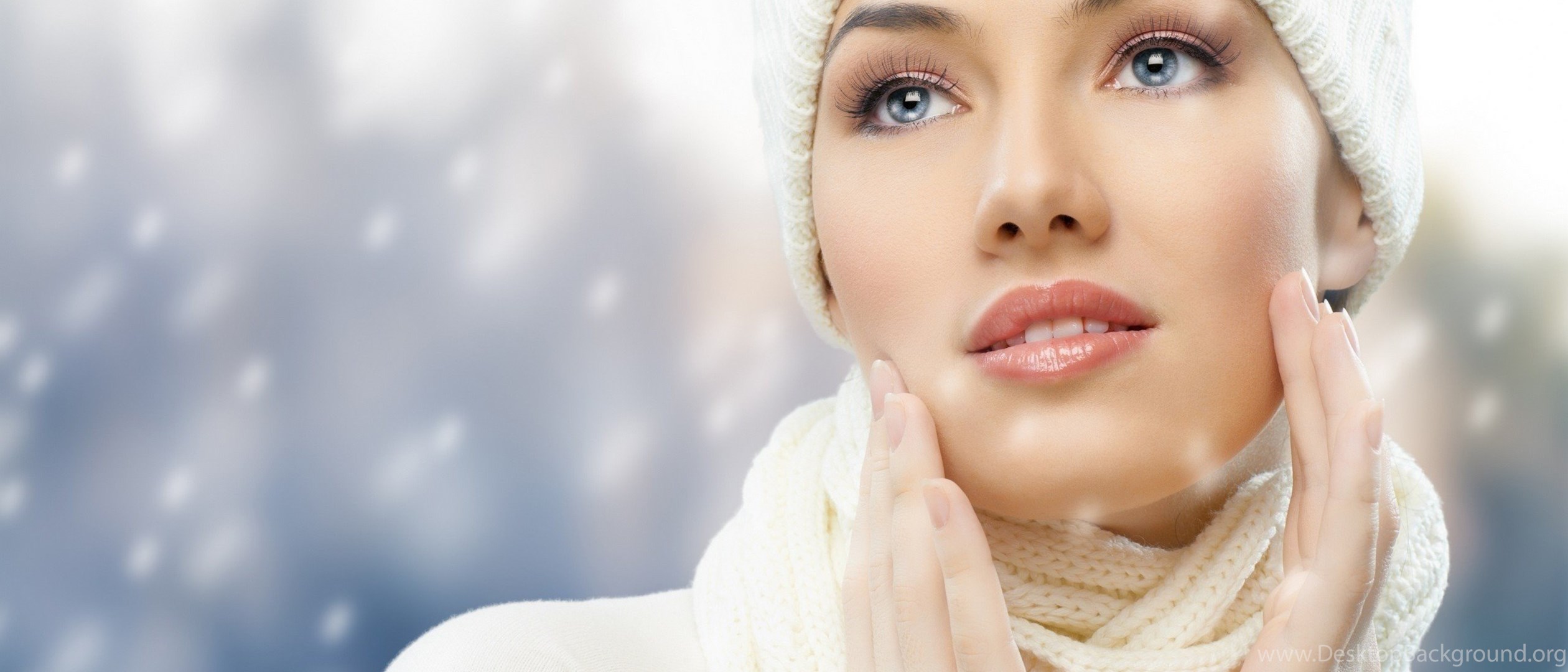 Indulging in warming winter teas such as natural ginger and lemon is a wonderful way to keep hydrated in winter – you will feel healthy, hydrated and cozy at the same time. It’s a win-win situation!
Indulging in warming winter teas such as natural ginger and lemon is a wonderful way to keep hydrated in winter – you will feel healthy, hydrated and cozy at the same time. It’s a win-win situation!
2. Choose a cleanser carefully.
Many high street cleansers actually contain harsh chemicals which can be damaging rather than nourishing. Ingredients such as alcohol and any added fragrances won’t do any favors for dry, cracked skin, as they strip away natural oils. Cream-based cleansers such as this Neal’s Yard Frankincense one will help keep the moisture in, while still takingoff the day’s dirt and make-up.
3. Exfoliate for excellent skin.
It may be the last thing on your mind when you have dry, itchy skin, but there are benefits to exfoliating your skin during winter. Not only will it take off the dry, dead skin cells, but it also helps you regenerate new ones. Your skin will thank you for using natural, exfoliating scrubs like this yummy-smelling geranium and orange scrub, or even check out this list of five homemade recipes that are easy to make using just ingredients from your kitchen pantry!
4. Keep those showers short and sweet.
Keep those showers short and sweet.
It’s tempting to reach for that dial and turn up the heat and have a long, hot shower or a bath when it’s cold outside. However, hot showers and long baths are a big no-no. Not only will excessively hot water dehydrate you, but it will also strip away those necessary oils from your body. If you come out of the shower and your skin is irritatingly red and itchy, it’s a sign that you’ve overdone it. All is not lost though. We’ve got you covered in the next step.
5. Use a natural moisturizer and apply immediately after washing.
Choose your facial moisturizer and body lotion carefully. We recommend oil based products rather than water based to keep important hydrating oils in your skin. Apply moisturizer or lotion immediately after washing to lock in as much moisture as possible, and don’t forget to include your hands and your feet, the most hardworking parts of your body! Our favorite for your body? This heavenly body butter is a blend of organic butters and oils, topped up with a therapeutic blend of aromatic essential oils. If you recently ran out of body lotion, look inside your pantry for a tub of coconut oil; beauty editors swear by this versatile pantry essential!
If you recently ran out of body lotion, look inside your pantry for a tub of coconut oil; beauty editors swear by this versatile pantry essential!
6. Protect from the elements.
Winter is undoubtedly harsher on your skin than summer. Out in the open, we may have the pocket essential lip balm to take care of dry, chapped lips, but we need more than that. The combination of low humidity plus those strong, blistering winds can lead to uncomfortably dry skin, so remember to wrap up. A scarf and gloves are essential to protect your hands and the delicate skin on your neck; we love these scarf and gloves by Ally Bee that are made out of super soft alpaca and sheeps wool for minimal irritation.
On the topic of skin irritation, a lot of cold-weather clothing can be uncomfortable when worn in direct contact with your skin. We recommend using natural, breathable base layers, such as the ones offered by The White T-Shirt Company, to protect you from any rough or scratchy winter fabrics that are aggravating to your skin when worn alone.
7. Sunscreen is not just for summer.
We may reach for the sunscreen automatically during the warmer months, but sunscreen is just as important during winter to shield from those harmful UVs. Make sure to cover your face, neck and hands (if they are exposed), and opt for a sunscreen with at least SPF 30 protection. If you’re up on the slopes, the Skin Cancer Institute recommends reapplying your sunscreen every two hours and immediately after heavy sweating. Don’t forget the spots that are easily missed such as the back of the neck, lips, ears and under the chin!
Top 10 Tips for Healthy Winter Skin
Here are some other tips to keep in mind when it comes to effective winter skincare, so that you can feel your best all winter long.
Top 10 Tips for Healthy Winter Skin
1. Invest in a Humidifier to Maximize Moisture
Using a humidifier in your home or office will add moisture to dry winter air and help keep your skin hydrated. Run a humidifier in the rooms you spend the most time in, including your bedroom.
Run a humidifier in the rooms you spend the most time in, including your bedroom.
2. Lower the Thermostat to Avoid Dryness
When it’s chilly outside, what’s the first thing you want to do? Crank up the heat! But central heat can make the air in your house even drier. Try setting the thermostat at a cool yet comfortable setting — 68°F to 72°F — to maintain healthy skin.
3. Limit Shower Time and Temperature
It may be tempting to take a long, steamy shower, but your skin will be much better-served with a 5- to 10-minute lukewarm shower (or bath), as the AAD suggests. You should also avoid using excessively hot water when washing your hands — if the water causes your skin to turn red, it’s too hot. Washing your hands in cooler water appears to be as effective at removing germs as warm water and is less irritating to skin, according to the Centers for Disease Control and Prevention (CDC). (2) And if you’re using a restroom air hand-dryer, use it just until your hands are damp rather than perfectly dry.
4. Opt for Gentle, Fragrance-Free Cleansers
The wrong soap can worsen itchy, dry skin. For instance, regular bar soaps may contain irritating ingredients and fragrances. Instead, wash with a fragrance-free, moisturizing cleanser or gel. (And do look for products specifically labeled “fragrance-free,” because “unscented” products may actually contain fragrances.) You can also prevent winter skin problems by using less soap overall, so limit your lathering to necessary areas, such as your hands, armpits, genitals, and feet.
5. Modify Your Facial Skin-Care Regimen for the Season
During the winter months, choose cream-based cleansers, and apply toners and astringents sparingly, if at all. Many astringents contain alcohol, which can further dry your skin. When your skin is dry and itchy, the AAD recommends you stop using products that contain alcohol and fragrances in order to help skin retain its natural oils. At night, use a richer moisturizer on your face.
And don’t forget your lips. Applying a moisturizing balm (such as petroleum jelly or another ointment) can help heal dry, cracked lips and keep them from getting chapped, according to the AAD. (3) If, however, your lip product causes a stinging or tingling sensation, try switching to a different product.
6. Moisturize Frequently, Especially Your Hands
Maintain healthy skin by moisturizing after washing up. “It’s best to use a cream or ointment in the winter. Lotions are better in warmer, humid climates. And don’t forget your hands,” says Dr. Stein Gold. Hand-washing, as the CDC notes, is vital, especially during cold and flu season. But, as Stein Gold points out, “constant washing will cause the hands to take a beating.”
Applying a hand cream after each washing can help, Stein Gold adds. She also recommends wearing waterproof gloves when washing dishes or cleaning around the house.
7. Apply Sunscreen — Even on Gray Winter Days
On bright winter days, snow reflects the sun’s rays — up to 80 percent, according to the Skin Cancer Foundation — increasing your risk of exposure. (4) That means whether you’re out on the slopes, playing in the snow, or just walking through a parking lot on an errand run, it’s just as important to be applying sunscreen in the harsh winter weather as it is in the summer.
(4) That means whether you’re out on the slopes, playing in the snow, or just walking through a parking lot on an errand run, it’s just as important to be applying sunscreen in the harsh winter weather as it is in the summer.
And don’t be fooled by darker, dreary days in winter, either. The sun’s harmful UV rays can permeate clouds and still cause damage.
Before you go outside, apply a moisturizing, broad-spectrum sunscreen with an SPF of 15 or higher to all exposed areas of your body.
8. Wear Appropriate, Comfortable, Nonirritating Clothing
Many cold-weather fabrics can aggravate dry winter skin. “Keep wool and rough clothing from directly touching your skin,” Stein Gold says. “This can cause dry skin to get irritated and itchy.”
Instead, wear light layers made from soft, breathable materials directly against your skin, and then pull on your heavier, warmer sweaters. Be sure to protect your hands from cold winter air with gloves or mittens, remembering to choose a pair that won’t irritate your skin. If you prefer wool gloves, put on cotton or silk glove liners first.
If you prefer wool gloves, put on cotton or silk glove liners first.
9. Remember to Eat Right and Stay Hydrated
“Sometimes when skin is very dry, it can be helped by foods or supplements that contain omega-3 or omega-6 fatty acids, such as fish oil and flaxseed oil,” says Barbara R. Reed, MD, a dermatologist in private practice at Denver Skin Clinic. “For the most part, however, it is important to help the skin moisturize from the outside.”
10. Change Out of Wet Clothes Quickly to Avoid Itchy Skin
Wearing wet clothes and shoes can further irritate your skin and cause itchiness. If gloves, socks, and pants become wet, be sure to remove them as soon as possible.
If you still experience dryness, discomfort, and irritation after trying these healthy skin tips, Stein Gold suggests using an over-the-counter, 1 percent hydrocortisone cream. “If you don’t see improvement in a few days, talk with your doctor,” Stein Gold says. You may need a prescription-strength moisturizer to overcome winter’s drying effects on your skin.
How to Get Rid of Dry Skin: 7 Expert Tips for Winter Skin Care
For all of winter’s sweeping seasonal highs (fireside gatherings, snowy walks, and ice-skating in Central Park), there are a few less pleasant side effects to note. Enter the onslaught of dry, itchy skin that’s currently settling in for the long haul. While switching to a good moisturizer at the first sign of chill proves helpful, the drier climate and indoor heat may have already taken a toll. Fortunately, there’s still time to get serious about a daily routine to ensure a hydrated, glowing complexion. Here, with the help of New York City dermatologist Shari Marchbein, M.D., is the definitive guide for preventing, soothing, and dealing with dry skin.
Prep Your Home
The drier the air, the drier the skin. To maximize the amount of water in the air, Marchbein recommends placing a humidifier in the room where you spend the most time, which, in many cases, is the bedroom. “A cool air humidifier increases the moisture level in the air,” helping skin’s barrier stay hydrated, she says. In addition, be sure the heat is kept on low or at a moderate temperature to avoid extra dryness in the air.
In addition, be sure the heat is kept on low or at a moderate temperature to avoid extra dryness in the air.
Dyson Air Multiplier AM10 Hygienic Mist Humidifier
Change Up Your Diet
With a direct connection between the gut and skin health, increasing your daily intake of fats may help with dry skin. Marchbein recommends eating a diet rich in walnuts, olive oil, and avocados (but not to sub them for a proper skin-care routine). While that extra glass of full-bodied red wine may seem like a good idea, Marchbein takes a conservative approach. “Don’t overdo it with alcohol, caffeine, and coffee,” she explains, as they are diuretics that will cause dehydration. And, she says, “drink tons of water.”
La Tourangelle Avocado Oil
Buff Your Skin
No matter how many serums and creams are applied, dry skin will stay dry without some light exfoliation. “Pick up a gentle scrub,” says Marchbein, “something with a mild glycolic or lactic acid to get off the dead skin. ” The expert suggests swapping a gentle formula for your regular cleanser two to three times a week. For those with raw or severely dry skin, skip the exfoliator and incorporate a wet washcloth instead for a gentler option. And tailor your Retin-A usage to every other day because, while it’s surely the wrinkle-fighting hero product, it is also a strong exfoliant and “may cause extra dryness during the winter.” Now that the skin is buffed, “[serums and] moisturizers can penetrate and really get to work.”
” The expert suggests swapping a gentle formula for your regular cleanser two to three times a week. For those with raw or severely dry skin, skip the exfoliator and incorporate a wet washcloth instead for a gentler option. And tailor your Retin-A usage to every other day because, while it’s surely the wrinkle-fighting hero product, it is also a strong exfoliant and “may cause extra dryness during the winter.” Now that the skin is buffed, “[serums and] moisturizers can penetrate and really get to work.”
MZ Skin Radiance & Renewal Instant Clarity Refining Mask
Simple Smoothing Facial Scrub
Kate Somerville ExfoliKate Gentle Exfoliating Treatment
Malin+Goetz Jojoba Face Scrub
Slather on an Antioxidant Serum
While most summertime products get swapped out come winter, serums are the one exception to that rule. “As long as it’s alcohol-free, an antioxidant serum is perfect for year-round usage,” says Marchbein. No matter the climate, skin “gets attacked by free radicals,” she explains, causing sun spots, the breakdown of collagen, and premature fine lines. To prevent the damage, apply a vitamin C formula as a first layer in the morning, before layering on heavier products. And don’t forget the sunscreen—a daily dose of SPF 30 will keep skin covered, even on cold, cloudy days.
To prevent the damage, apply a vitamin C formula as a first layer in the morning, before layering on heavier products. And don’t forget the sunscreen—a daily dose of SPF 30 will keep skin covered, even on cold, cloudy days.
Marmur Metamorphosis Balance Serum
Drunk Elephant C-Firma Day Serum
SkinCeuticals C E Ferulic
Clinique Fresh Pressed Daily Booster with Pure Vitamin C
Switch to a Heavy Face Cream
Perhaps one of the most important and commonly overlooked steps in the dry skin game is changing to a seriously hydrating moisturizer. “Look for creams, rather than lotions, that are made with ceramides and hyaluronic acid,” Marchbein says. Ceramides aid in the prevention of the skin’s barrier, which is “easily broken down during the winter.” For patients with severely chapped faces, pack on a hefty amount of product, she says, morning and night.
Neutrogena Hydro Boost Water Gel
CeraVe Moisturizing Cream
Avoid Harsh Cleansers
Be sure to toss any face washes with drying ingredients, like fragrances or additives, in favor of those with formulated chamomile or oatmeal. “A really gentle cleanser, like Cetaphil, is a great option that won’t strip skin of its natural oils,” which are needed to protect overall moisture, Marchbein says.
“A really gentle cleanser, like Cetaphil, is a great option that won’t strip skin of its natural oils,” which are needed to protect overall moisture, Marchbein says.
Dr. Loretta Gentle Hydrating Cleanser
Liz Earle Cleanse & Polish Hot Cloth Cleanser
Cetaphil Gentle Skin Cleanser
La Prairie Purifying Cream Cleanser
NYDG Colloidal Oatmeal Cleanser
Zero In on a Nighttime Routine
Every night before bed, Marchbein recommends sticking to a routine that will ensure healthy skin come morning. After your face serum and moisturizer, apply a gentle eye cream to the under eyes and lids, like Kiehl’s avocado treatment. For extra protection, coat the area with Aquaphor. “The product will seal in the cream and prevent against redness and eczema,” both of which are common during this time of year.
While the heat from an evening shower may feel phenomenal on a chilly day, Marchbein advises to limit rinse time to five minutes or less and to use warm—not hot—water, which only adds to surface dehydration. And instead of irritating soap bars or harsh body washes, pick up a creamy cleanser, like Dove’s gentle formula. “Within 60 seconds of [stepping out of the shower],” she says, apply a thick body moisturizer. “Look for something with mineral oil, lanolin, or ceramides,” she explains, to help skin hold on to moisture throughout the night.
And instead of irritating soap bars or harsh body washes, pick up a creamy cleanser, like Dove’s gentle formula. “Within 60 seconds of [stepping out of the shower],” she says, apply a thick body moisturizer. “Look for something with mineral oil, lanolin, or ceramides,” she explains, to help skin hold on to moisture throughout the night.
As a last step, Marchbein urges patients to coat hands with a thick moisturizer, like CeraVe, and dab Aquaphor on cuticles and lips before hitting the sheets. And for those who are feeling overly dry, a hydrating sheet mask may be a good idea once a week at bedtime. “Stay away from anything with charcoal or clay,” she warns, citing calming yet hard-working products should contain plenty of hyaluronic acid. Here’s to healthy, hydrated, and happy skin through spring.
Aquaphor Advanced Therapy Healing Ointment
Dove Deep Moisture Body Wash
Aveeno Daily Moisturizing Lotion
Dr. Jart Water Replenishment Cotton Sheet Mask
5 Dermatologist tips for winter skincare – New West Physicians : New West Physicians
Conquer winter itch with dermatologist tips
(BPT) – The chill, the dryness, the itch: As temperatures drop, winter can wreak havoc on your skin. Fortunately, you can fight winter’s wrath by taking a few smart, proactive steps.
Fortunately, you can fight winter’s wrath by taking a few smart, proactive steps.
Winter skin woes are common, with 83 percent of Americans saying their skin feels differently during the winter than it does the rest of the year, according to a recent survey conducted online among 2,000 U.S. adults by Harris Poll on behalf of CeraVe. More specifically, 77 percent say their skin feels dry in winter and 41 percent even describe it as itchy.
“Winter weather can affect all skin types,” says board-certified dermatologist Dr. Shari Marchbein. “Even though people are aware that their skin is dry, they often unknowingly make mistakes that can cause their skin to feel worse. Being mindful of how you’re treating your skin and adapting your skincare routine are two essential ways to help ease the skin discomforts that often come with the season.”
To help fight dry and itchy skin brought on by winter, Dr. Marchbein suggests five simple skincare tips:
1. Stay warm, not hot
Everyone loves a long, hot shower in the winter. In fact, the survey found 50 percent of people take more hot showers during the winter. Unfortunately, hot water strips the skin of natural moisture that keeps it healthy, hydrated and protected. Take a short, lukewarm shower instead to avoid irritating the skin. Find that warm comfort by cozying up in a blanket afterward instead.
In fact, the survey found 50 percent of people take more hot showers during the winter. Unfortunately, hot water strips the skin of natural moisture that keeps it healthy, hydrated and protected. Take a short, lukewarm shower instead to avoid irritating the skin. Find that warm comfort by cozying up in a blanket afterward instead.
2. Fix the winter itch
That winter itch is most commonly caused by severely dry skin, so be sure to moisturize daily with products that contain ceramides to maintain hydration and fight dryness. Ceramides are naturally found in skin but can be regularly disrupted by factors like the environment and daily activities, leading to dry skin. Keep a tub of a ceramide-rich cream in your bathroom to slather on while your skin is still wet after showering to really seal in moisture and help restore the skin’s protective barrier. For added moisture and protection, use an ointment like CeraVe Healing Ointment, which contains ceramides and helps to heal dry, chapped skin, and immediately slip on socks, gloves and comfortable clothes to help it soak in.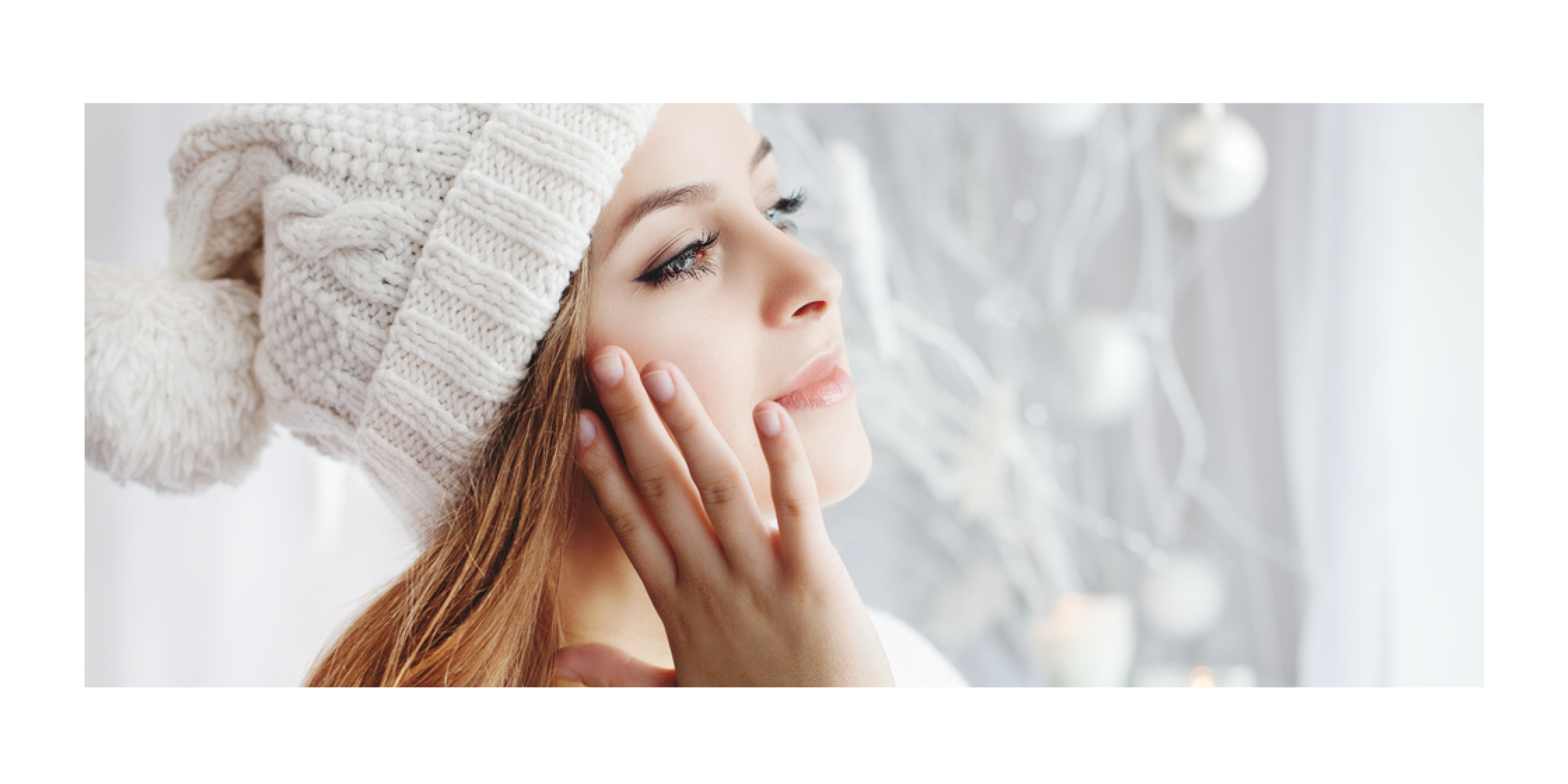
3. Dress smart
When you’re heading outside, be sure to bundle up! Always wear gear that protects your skin from the elements, like hats, scarves and gloves. Additionally, while winter makes us more inclined to bundle up in cozy sweaters, avoid any materials that may irritate your skin. If you feel itchy under your favorite wool sweater, wear a breathable shirt underneath or consider swapping it for a different material, like fleece or cashmere.
4. Maximize moisture
The colder winter air pulls moisture from the skin leaving it dry, itchy and lackluster, and heading indoors isn’t helping. The rising thermostat in your house causes dry air that sucks hydration from your skin. Use a humidifier to add moisture back into the air in main spaces, like your bedroom. You should also be sure to adapt your skincare routine for the winter just like you would your wardrobe. Swap your light creams out for richer products that will add the extra moisturization needed during the winter and be sure to use them twice daily.
5. Drink up
However, adding moisture back into the air isn’t the only way to hydrate yourself. You should also be moisturizing yourself from the inside out by drinking plenty of water throughout the day. Water has a wide array of health benefits and the quality of your skin is one of them — especially during the winter months when we tend to lose moisture more often. Warm tea is another great way to get hydrated while comforting yourself during the colder months.
“Winter doesn’t have to mean dry, itchy and uncomfortable skin,” says Marchbein. “A few proactive steps and adjustments to your daily routine can help ease some of those winter worries so you can enjoy all the fun the season has to offer.”
Tags: colorado, denver, winter, winter skin care, winter weather health
Winter skincare tips – 10 things a dermatologist wants you to know in winter
Benjamin Vnuk for Harper’s Bazaar
Tight skin, rough knuckles, chapped lips? Say hello to winter, about to wreak havoc from head-to-toe. To show it who’s boss, we asked Dr Justine Hextall, consultant dermatologist on behalf of The Harley Medical Group, what we need know to keep skin happily hydrated throughout the cold snap. From your brows to your feet, here’s how to treat your skin – starting now.
To show it who’s boss, we asked Dr Justine Hextall, consultant dermatologist on behalf of The Harley Medical Group, what we need know to keep skin happily hydrated throughout the cold snap. From your brows to your feet, here’s how to treat your skin – starting now.
1) You still need SPF
“Just because it is winter, it doesn’t mean you should put away your suncream. Whilst there is less UVB around in winter, levels of UVA (or UV-ageing as it is known in the dermatology world) are still significant enough to age our skin. I advocate a sunscreen like Ladival, specifically with a high UVA rating all the year round if you want to protect your skin from its ageing effects. As UVB is the wavelength that stimulates vitamin D production, levels can drop in the winter months and if necessary we can supplement with oral vitamin D3.”
2) Consider professional skin treatments
“Winter is a great time of year for skin treatments. We always worry about peels and laser treatment in the summer months.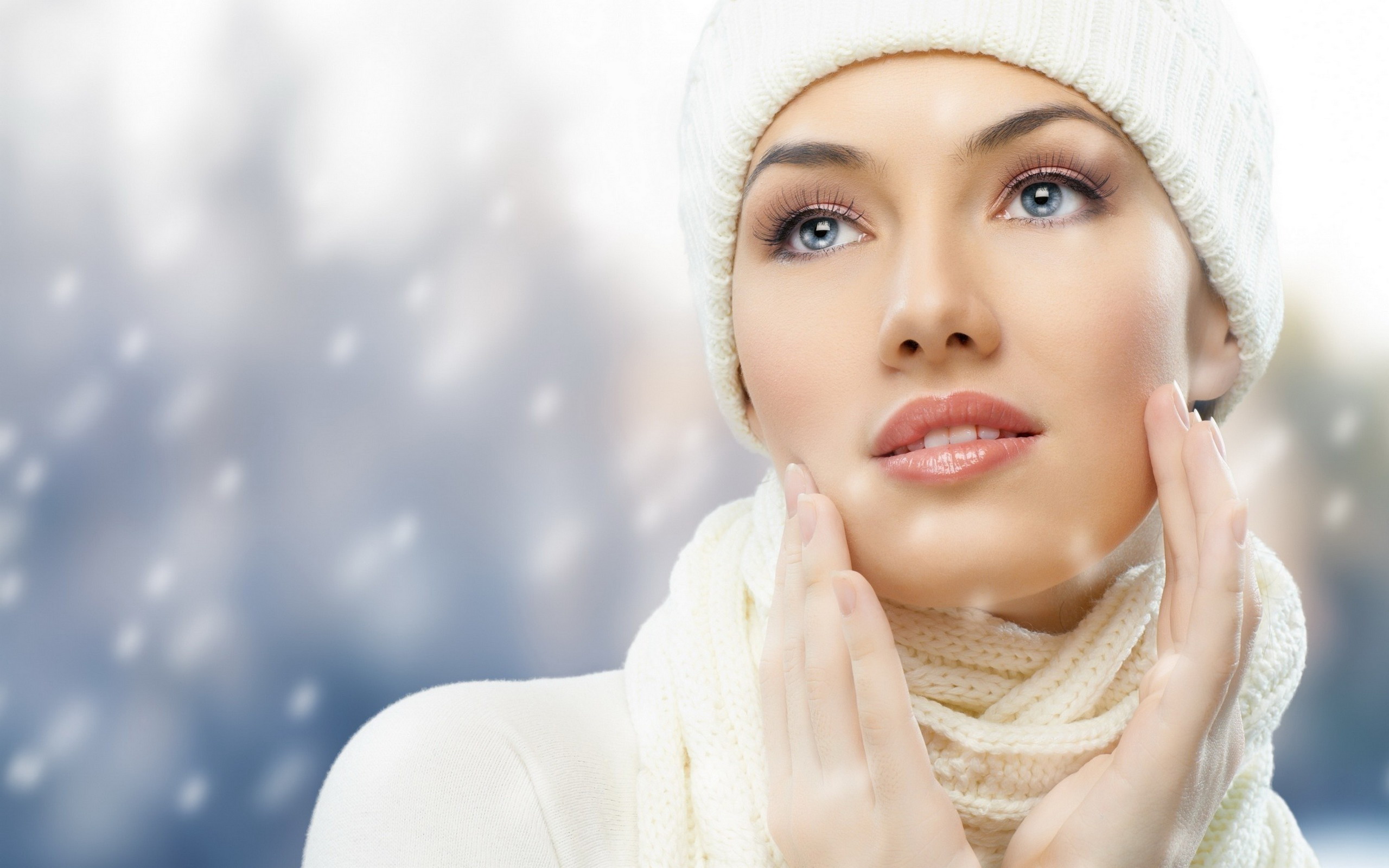 With sun exposure before or after such procedures there is a higher risk of unwanted post-inflammatory hyper-pigmentation. Autumn and winter therefore represents an opportunity. I would however suggest planning ahead, to make sure your skin has time to settle and be at its peak for the party season. A course of The Harley Medical Group’s DermaFNS can help to stimulate new collagen and restore skin glow. Likewise, rather than wait for summer, now is the time to start tackling unwanted hair with a course of Laser Hair Removal at The Harley Medical Group.”
With sun exposure before or after such procedures there is a higher risk of unwanted post-inflammatory hyper-pigmentation. Autumn and winter therefore represents an opportunity. I would however suggest planning ahead, to make sure your skin has time to settle and be at its peak for the party season. A course of The Harley Medical Group’s DermaFNS can help to stimulate new collagen and restore skin glow. Likewise, rather than wait for summer, now is the time to start tackling unwanted hair with a course of Laser Hair Removal at The Harley Medical Group.”
3) How to keep hydrated
“Your skin will become drier and often more sensitive with the onset of colder weather and central heating. Make sure you keep hydrated during the day, swap your coffee for green tea which has great anti-oxidant effects. Gentle cleansing is a must, you need your skin barrier to be as healthy as possible so that it can retain vital moisturiser. As a rule of thumb if your skin feels tight after washing it is likely that the cleanser you are using has disrupted your skin barrier.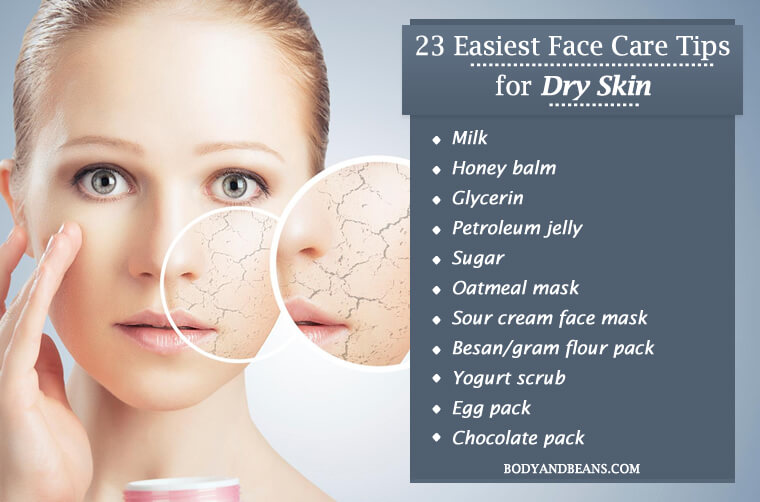 Skin should feel calm and hydrated after washing, if you are reaching immediately for your moisturiser you may want to consider a gentler cleanser. I like DermaQuest Essential Daily Cleanser and Cetaphil gentle wash.”
Skin should feel calm and hydrated after washing, if you are reaching immediately for your moisturiser you may want to consider a gentler cleanser. I like DermaQuest Essential Daily Cleanser and Cetaphil gentle wash.”
4) Tweak your daily skincare routine
“If you are having to apply a moisturiser during the day it is likely your skin routine needs tweaking. Try swapping your lotion to a cream and massaging it into your skin for 30 seconds to maximise its effects. For treatments at home I like the Hydraphase Intense Masque by La Roche Posay and the Eve Lom Moisture Mask.”
5) Book in for a facial
“Winter skin is often dull, so I recommend a professional facial about every three to four weeks. That’s how long it takes your skin to move through the full life cycle of skin cell growth so I often advise people to opt for a superficial peel or exfoliating treatment such as The Harley Medical Group Power Pumpkin Resurfacer (£99, available nationwide) in order to slough off dead skin and allow better absorption of active topical skincare. Regular facials will help to keep your skin clean, clear and hydrated whilst maximising your everyday skincare regime too.”
Regular facials will help to keep your skin clean, clear and hydrated whilst maximising your everyday skincare regime too.”
6) Protect lips from ‘lick eczema’
“Licking sore lips will only exacerbate dryness and can cause what is referred to as ‘lick eczema’. Make sure your lips are sealed with an effective ointment at all times, particularly before eating and drinking as some foods like tomatoes which can irritate chapped lips. I recommend Epaderm Ointment or Cicaplast Balm B5 by La Roche Posay. If you are skiing remember lips are vulnerable to sun burn. Zinc oxide is a fantastic physical sunscreen and will help to reflect the UV away from the skin of your face and lips.”
7) Prevent dry, chapped hands
“Hands are very high risk for becoming chapped and sore in the winter months. New mothers constantly washing hands often come and see me in the winter months. My advice is to avoid baby wipes as they can contain preservatives that trigger hand eczema and for everyone to wear gloves when washing.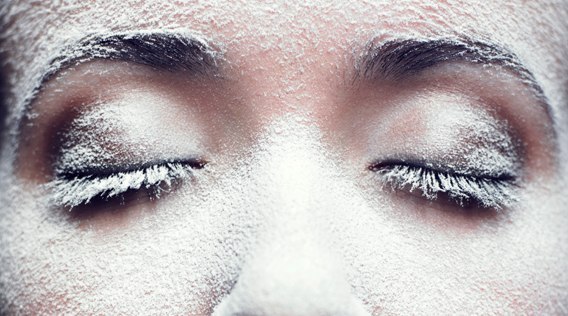 Dermol 500 is a fantastic moisturising soap substitute that is mildly anti-bacterial, it is very useful if frequent hand washing is necessary. At night apply a rich layer of hand cream under cotton gloves. After a few nights, the skin barrier will start to heal and the difference is often amazing. I love Avene XeraCalm A.D. Lipid and Neutrogena hand cream.”
Dermol 500 is a fantastic moisturising soap substitute that is mildly anti-bacterial, it is very useful if frequent hand washing is necessary. At night apply a rich layer of hand cream under cotton gloves. After a few nights, the skin barrier will start to heal and the difference is often amazing. I love Avene XeraCalm A.D. Lipid and Neutrogena hand cream.”
8) Monitor scaly skin for dermatitis
“If you notice scaling around your nose and eyebrows in the winter months you may be developing a dermatitis thought to be exacerbated by yeast. Cold winter weather is also a known trigger. I recommend checking with your GP and applying Canesten cream to the affected areas twice a day for a week and every so often to reduce recurrence. If you also use a very gentle skin wash and moisturise twice a day it will help. Sometimes an anti-inflammatory cream may be needed too for a short time, and your doctor can advise here. As with most skin conditions early intervention often stops them in their tracks. ”
”
9) Consider a foot peel
“Feet often become dry and cracked in the winter months. Exfoliating frequently and applying an effective moisturiser always helps, but for many there just aren’t enough hours in the day. This is where the Skin Republic Foot Peel comes in. This amazing treatment is in essence a chemical peel for feet. Don’t be fooled if your feet feel no different in the morning. In a few days, you will be essentially shedding your exoskeleton. Expect to lose layers of skin, unattractive as it is, the results are baby soft feet.”
10) Use bath time to hydrate
“Baths are a gift to dry winter skin. Not only do they provide the all-important relaxation to switch of those skin damaging stress hormones; baths are a marvellous opportunity to hydrate skin. If you suffer with eczema, Balneum Plus Bath Oil can hydrate skin and reduce itching. For a treat, I love Jo Malone Orange Blossom Bath Oil and the This Works Deep Sleep Bath Oil.”
This content is created and maintained by a third party, and imported onto this page to help users provide their email addresses.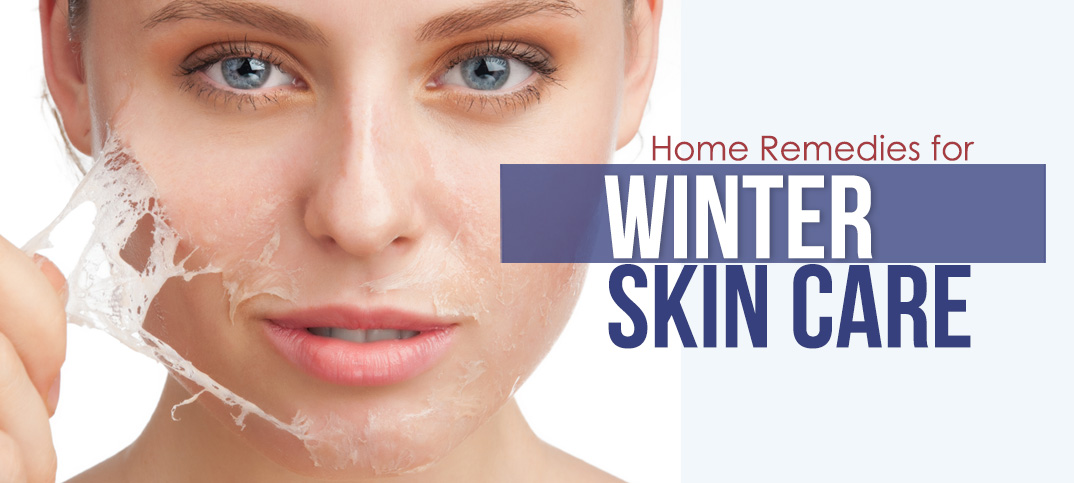 You may be able to find more information about this and similar content at piano.io
You may be able to find more information about this and similar content at piano.io
10 Tips for Helping Your Skin Survive Winter
Winter brings freezing temperatures and weather that can be very harsh on all skin types. Refresh your routine for the cold conditions with these 10 quick and easy skincare tips from Sally Wohlgemuth, Esthetician:
Protect your skin.
Always wear gloves and a scarf to protect against the cold winds and snow. Also, please don’t forget the sunscreen! Winter sun can be just as damaging as the summer sun. Applying a zinc oxide or titanium dioxide to any exposed areas will give you the physical protection you need.
Humidify.
The heater in your home and auto is very dry and dehydrating. Placing a humidifier in your home, particularly in your bedroom, will put much-needed moisture back into the air and help prevent your skin from drying out during the winter months.
Skip the hot bath.
A long, hot bubble bath or shower might seem wonderful when you’ve been out in the cold, but it strips your skin of much-needed moisture. If you absolutely love your hot showers, try to keep them at a ten-minute maximum and definitely not more than once a day!
Change up your cleanser.
Cleansers can be extremely drying to the skin. If you’re used to using options that contain Alpha or Beta Hydroxy Acids, rotate with a hydrating cleanser that contains moisturizing ingredients such as The Max Cleanser with healing stem cells from Image Skincare.
Hydrate.
We tend to drink less water in the winter because we turn to comfort drinks. I mean, who doesn’t love hot cocoa or a peppermint latte? Just don’t forget that your skin needs hydration from the inside out. Your skin is made up of 64% water and it is largely dictated by your hydration levels. Drinking a warm glass of water with lemon or mint can be just as comforting yet hydrating.
Exfoliate gently.
As the months grow colder, you will need to assist with cellular turnover by gently exfoliating. It’ll brighten your skin, and your moisturizer will also penetrate better. You can do so by adding an exfoliating mask to your regimen. It will slough off that dead winter skin without overly drying you out. We recommend, The Vital C Hydrating Enzyme Mask from Image Skincare.
Moisturize.
Bump up that moisture! Adding a night cream to your regimen will help to bring some much-needed moisture into the skin. Moisturizing is essential, but it’s crucial that you use the right one for your skin type. Seeking the advice of a skincare specialist is key to optimal skin health.
Add a serum.
Boost the efficacy of your moisturizer by applying a serum beforehand. Serums with antioxidants like Vitamin C and resveratrol help to brighten dull winter skin.
Add hyaluronic acid.
Adding a few drops into your current moisturizer will boost hydration! HA is a humectant, which means it grabs moisture and holds it so the skin can absorb. The hyaluronic acid molecule can hold up to 1000 times its weight in water!
The hyaluronic acid molecule can hold up to 1000 times its weight in water!
Don’t forget your lips.
Sure, it’s easy to grab a cherry-flavored lip balm, in the checkout line. Don’t do it. It’s actually dehydrating the lips and doing more harm than good. Choose a product that hydrates and adds moisture like The Balancing Lip Enhancement Complex from Image Skincare. This product will add up to 40% of moisture to hydrate and soften the delicate skin of the lips so they’ll be mistletoe ready!
The 12 Best Winter Skin Tips
Winter’s dark days, biting chill, breathtaking winds and dreary rain doesn’t just put our mood on a bit of a downer—it can wreak havoc with our complexions, too. Cold weather can cause our skin to be dry, flaky, red and inflamed faster than you can say “knitwear.” But it is possible to keep your complexion plump, happy and luminous throughout the winter months—you just need the expert know-how. Thus, we called on a host of skincare experts to reveal the tried-and-true skin tips that will keep your complexion looking its glowing best all winter long. Keep scrolling for the 12 essential winter skin tips you need to know.
Keep scrolling for the 12 essential winter skin tips you need to know.
Avoid Fragrance and Alcohol
“Switch to a gentle fragrance-free cleanser, as strong soap can worsen itchy, dry skin,” suggests Dr. Ross Perry Medical Director of CosmedicsUK. “I’d advise choosing a cream-based cleanser, and use toners and astringents sparingly as quite often these contain alcohol, which can further dry your skin out.”
Check out our round-up of the best cream cleansers.
Take Omegas
“Take supplement with omega 3, 6 and 9,” advises Dr. Sophie Shotter. “My favourite is Zenii Triple Omegas ($40). A lot of people don’t realize the importance of these to skin health, but there is significant evidence that omegas can even improve eczema. Their role is to maintain a healthy cell membrane, which is what allows a cell to hold water. This healthy barrier will support softer more supple skin. ”
”
Dr. Nicholas Perricone agrees. “A supplement I advise patients not to be without is a high-quality Omega-3,” he says. “I’ve seen some of the most dramatic results in terms of skin transformation with those who have chronically dry skin who begin an omega 3 supplement regimen. They’ll quickly feel the difference in their skin and notice diminished dryness and increase in suppleness and radiance.”
Zenii
Triple Omegas
$40
Shop
Moisturize Your Hands
“Hands tend to get forgotten in winter and yet can highlight signs of aging when they’re not looked after and appear dry, lined and cracked,” notes Dr. Perry. “Wear gloves if you’re cleaning or washing up to protect your hands. Frequent washing of hands in winter will also help keep cold and flu germs away, so always use a hand moisturizer afterwards.”
Check out the best hand creams here.
Eat More Avocado
“Eating healthy fats such as avocado has been proven to help maintain supple, spring-y skin,” says Dr. Rekha Tailor, medical director and founder of Health & Aesthetics. “Healthy fats are essential for keeping your face and hands looking healthy and prevent them from drying out in the cold winter months.” (Plus, eating avocados can help your hair, too.)
Rekha Tailor, medical director and founder of Health & Aesthetics. “Healthy fats are essential for keeping your face and hands looking healthy and prevent them from drying out in the cold winter months.” (Plus, eating avocados can help your hair, too.)
Stocksy
Use SPF
“People tend to think that once the winter months arrive, they can stop using SPF on their face,” says Dr. Tailor. “However, despite the fact that the temperature drops significantly in the winter months, the sun can still be extremely strong and damaging to the skin, especially when reflecting off the snow. Therefore, it’s important to continue to wear an SPF on your face, neck and hands (or anything that’s exposed). Doing so will help to reduce the drying of the skin and hold off premature ageing for longer.”
Here is the Byrdie edit of the best sunscreens.
Keep Active
While there’s nothing better than snuggling up under a warm blanket in front of the fire in winter, staying active boosts circulation, gets your pulse rate up and gives you a healthy glow. “Even just a half an hour walk three times a week will help keep your skin looking radiant,” explains Dr Tailor.
“Even just a half an hour walk three times a week will help keep your skin looking radiant,” explains Dr Tailor.
Stocksy
Choose Your Accessories Carefully
When the temperatures dip, most of us reach for our cozy scarves and beanies. While cold weather accessories are essential for protecting against the elements, many of the knitted accessories can be uncomfortable and irritating when worn directly next to the skin. “Itchy skin, also known as pruritus, can be accentuated by rough, irritating winter fabrics,” explains Dr Tailor. “To avoid suffering from irritated skin and scalp when wearing winter clothes, try to opt for items made from natural, breathable materials. This helps the air to circulate and reduces the build-up of heat in one place, which can add to the irritation.”
You also need to take good care of your knitwear. Pamela Marshall, founder of skincare brand Mortar & Milk, notes that a lot of clients get acne around the jawline and neck during the winter months. “This is usually due to dirty scarves and jacket collars that constantly touch our face,” she says. “Make sure you’re cleaning these regularly. If you see makeup around the collar of your puffer jacket, it needs to be cleaned.
“This is usually due to dirty scarves and jacket collars that constantly touch our face,” she says. “Make sure you’re cleaning these regularly. If you see makeup around the collar of your puffer jacket, it needs to be cleaned.
Stock Up On Kale
Kale is packed with vitamin C—in fact, one cup has more than 50 per cent of the recommended vitamin C you need in a day, according to Dr. Tailor. “This helps your skin to grow new cells and heal—just what you need to keep skin looking bright and fresh,” he says.
stocksy
If you’re a fair-weather dry skin brusher, try to keep up the habit throughout winter. Dry skin brushing stimulates the lymphatic system and supports detoxification. “Before bathing, brush your skin with a soft natural brush—always brush upwards towards the heart and be gentle with the strokes,” advises Lisa de-la-Plain, co-founder and professional beauty therapist at Beauty Flash. “This helps remove dead skin cells to unclog and decongest skin, which will help it absorb more nutrients. ”
”
Temeaye
Bath Body Brush for Dry or Wet Brushing, Set of 2
$17
Shop
Get Ingredient Savvy
Dr. Shotter reveals the ingredients you should factor into your skincare regimen this winter and why:
- Urea: This is a more gentle exfoliant. It’s a great go-to ingredient throughout the winter months for both face and body, when our skin barrier can’t necessarily tolerate the strong active ingredients it does in spring and summer.
- Lipids: Ceramides are long-chain lipids which support your skin cells, keeping them in an orderly matrix. Between summer and winter, our ceramide levels drop significantly, meaning our skin loses more water through TEWL. Studies have actually shown that the combination of ceramides, cholesterol and fatty acids are even more effective than each ingredient alone. Skinceuticals Triple Lipid Restore ($128) is a perfect combination for a winter moisturiser.
- CBD is a new ingredient in skincare, but has been shown to be a powerful anti-inflammatory.
 The cold winds that blast our skin during the winter months can make our skin feel more irritated.
The cold winds that blast our skin during the winter months can make our skin feel more irritated.
Your No-B.S. guide to understanding CBD, once and for all. - Squalene is another great winter moisture ingredient. Squalene is a natural oil produced by your skin, which decreases as you age. It not only nourishes and moisturises your skin but also helps to increase that sluggish cell turnover.
- Retinol: Winter skin can feel more irritated, but it’s important to still pay attention to retinol. A healthy dose of vitamin A will help to speed up the cell turnover, which becomes sluggish during the winter months. Keeping your skin stimulated will keep it looking more vibrant, healthy and less wrinkled.
Sleep For Glowing Skin
Dr. Murad, board certified dermatologist and founder of Murad skincare, says getting deep sleep is one of the best things you can do for your skin and your health. “Sleep has important therapeutic benefits—it may be one of your body’s most productive times for repairing every system in your body, including skin which is your largest system and the one that displays the most dramatic signs of sleep deprivation,” he explains. “My top tip is eating a walnut or two before bed. Rich in antioxidants, omegas and one of the best food sources of melatonin, they may help improve your sleep.”
“My top tip is eating a walnut or two before bed. Rich in antioxidants, omegas and one of the best food sources of melatonin, they may help improve your sleep.”
Don’t Overuse Oils
There is a school of thought in the skincare world that using oils can exacerbate skin conditions like rosacea and acne. If you feel like your skin could benefit from some extra nourishment on the coldest days, esthetician Nataliya Robinson advises not overseeing pure oils like jojoba or argan. “Using pure oils on your skin daily can damage your lipid barrier. The best way to use oils is to mix the oil into your usual day or night cream.”
Try These 5 Skin-Boosting Products Below…
Tinker Taylor
Lip Scrub
$27
Shop
Created by makeup artist Zoe Taylor, this scrub contains cinnamon, cranberry seed oil, baobab seed oil and rice bran oil. Seriously nourishing, this leaves your lips soft, smooth and nourished. It tastes great, too!
Trilogy
Cream Cleanser
$39
Shop
With pure plant rosehip, evening primrose and carrot oils, this gentle cleanser effectively removes makeup and dirt without stripping the skin.
Murad
Night Fix Enzyme Treatment
$70
Shop
Packed with enzymes, this treatment very gently exfoliates the skin, essentially giving your skin’s natural repair processes a helping hand. It also helps to lock in hydration so you wake up to a brighter, smoother complexion.
Perricone MD
Cold Plasma +
$149
Shop
Created to treat and soothe winter skin, this multi-tasking serum contains vitamin C ester and omegas 3, 6 and 9 to brighten pigmentation and plump out fine lines and wrinkles. It also reduces redness, whiet leaving the complexion looking more radiant.
Epaderm
Emollient For Dry Skin
$22
Shop
This thick, emollient-rich cream is fragrance- and color-free and designed to lock moisture in in even the driest skin types.
Next up, from niche oils to natural pigments: 7 Moroccan beauty secrets everyone should know.
90,000 7 rules for winter skin care. Dermatologist’s advice :: Health :: RBK Style
Margarita Hecht,
leading dermatologist of the Butterfly Children Foundation
During the cold season, skin cells are exfoliated more slowly, leaving the skin texture uneven. This leads to a retention of sebum (sebum) on the skin, an increase in the number of bacteria and, as a result, inflammation on the face.
This leads to a retention of sebum (sebum) on the skin, an increase in the number of bacteria and, as a result, inflammation on the face.
Dryness and roughness of the skin in winter is caused by a violation of its water balance due to temperature changes – being in a room with central heating, traveling by transport.
That is why in each of the seasons, including in the cold season, it is necessary to adjust your skin care in the same way as you change your wardrobe every few months. Like clothing, skin care products need to be chosen carefully, with an understanding of their purpose and how they are to be used.
There are seven main rules for winter skin care.
1. Use mild exfoliators
It is logical to assume that exfoliating the skin in winter can make it even drier. There really is such a risk, but this does not mean that you should stop using exfoliants in the cold season. Exfoliating the skin is important all year round – it helps speed up skin regeneration and improves absorption. In winter, you just need to use less harsh means. This will avoid irritation.
In winter, you just need to use less harsh means. This will avoid irritation.
So, instead of a scrub with abrasive particles, use a gommage with spherical synthetic particles or an exfoliant cream containing AHA and BHA acids in a low concentration.
The frequency of using exfoliants depends on the skin type:
- for dry skin – once a week;
- for combination and oily skin – twice a week.
2. Use creams and serums with vitamin C
Vitamin C will help preserve the summer radiance of the skin in the cold months. It brightens and strengthens the skin, stimulates the production of collagen (thanks to which the skin retains moisture better) and helps protect it from external aggressors.
Moreover, it also helps to repair damage. Thus, during the summer months, the skin is exposed to harmful UV rays, which lead to photodamage and premature aging. Using vitamin C will help reverse these damage, maintain an even skin tone and texture, and enhance its natural glow.
Using vitamin C will help reverse these damage, maintain an even skin tone and texture, and enhance its natural glow.
When choosing products containing vitamin C, pay attention to the Ascorbic acid component in the first ten positions of the composition.Its presence guarantees the concentration of vitamin C, which will not irritate the skin (5-10%).
3. Provide the skin with constant hydration
In winter, add a serum containing high and low molecular weight hyaluronic acid, azulene and Asiatica Centella extract to your usual moisturizer. These components will not only be able to penetrate into the deep layers of the epidermis and nourish it with moisture, but also restore damaged skin areas.
When choosing a moisturizer, pay attention to texture.Fluids and emulsions are not suitable for the winter period – these light moisturizers are ideal for most skin types in the summer. When the air temperature is low and the central heating is working, you need to switch to cream. The denser texture will seal the moisture inside and act as a winter coat for the skin.
The denser texture will seal the moisture inside and act as a winter coat for the skin.
4. Change the texture of the face cleanser
If you used a gel-textured or foaming face cleanser in the summer, then as soon as the temperature starts to drop, you should change it to a cream-gel or a product with a cream or oil formula.
In winter, the skin produces less sebum, which protects the upper layers of the epidermis from drying out. Therefore, gentle cleansing with milder products will help prevent excessive sebum removal and preserve the hydro-lipid protective mantle.
Creams, oils, balms and micellar water can still be used to remove makeup in the colder months. These products effectively remove makeup and deeply cleanse pores without disturbing the hydrolipidic oil balance.
What are primers, mists, tonics, lotions and micellar water for
5.
 Adjust problem skin care
Adjust problem skin care
For oily and acne-prone skin, reduce the amount of clay-based cleansing and mattifying masks in winter. Try moisturizing masks two to three times a week.
For extra hydration, use no-rinse moisturizing masks at night. For acne-prone skin, pay attention to the composition – it should be free of paraffin, mineral oil and shea butter.
6.Use SPF products even in cloudy weather
It is important that SPF is an integral part of skin care in winter, as UV rays are active during this time of the year. In addition, solar radiation can penetrate through windows. Sunscreen should be applied daily to face and other exposed skin areas such as neck, ears, and hands.
7. Review the care of your lips, hands and body
Body
In cold, uncomfortable weather, you so want to take a hot shower.However, hot water dries out the skin quickly, and if not moisturized immediately, it can develop flaking and cracking. Patients with chronic skin conditions such as eczema or atopic dermatitis are at risk of exacerbating their problems.
Patients with chronic skin conditions such as eczema or atopic dermatitis are at risk of exacerbating their problems.
Take a warm shower with detergents that are oily or thick, creamy and do not form copious lathers. After showering, apply a moisturizing cream with hyaluronic acid, ceramides, wheat germ, vitamin A, urea, ceramides.This will maintain the moisture barrier and prevent dryness.
Hands
The skin on the hands has fewer sebaceous glands compared to the skin on any other part of the body. This is why moisture is quickly flushed out of your hands, increasing the risk of cracking and itching. In winter, be sure to apply moisturizer to your hands 30 minutes before leaving the house, and do not forget to wear gloves when outside.
Stop
To moisturize and retain moisture in the skin of the feet, choose creams based on glycerin and petroleum jelly.Also, exfoliate your feet from time to time. This will allow her to easily absorb the moisturizer.
Lips
The skin on the lips is thinner than on the rest of the face, which makes it more susceptible to the damaging effects of cold and wind. To replenish hydration and protect your skin, you need to wear lip balm not only during the day, but also at night, when high temperatures in the room and even breathing through the mouth can aggravate dryness.
90,000 18 winter beauty secrets
It’s always nice to look your best.But in winter we are faced with the fact that our skin and hair are exposed to great stress. And, of course, we want to prevent unwanted changes.
Bright Side has collected tips to help you survive the winter and not lose your beauty.
Skincare
- For your face, it is better to use a moisturizer not water-based, but oil-based. The oil will create a protective layer that will trap moisture.
- To avoid skin dryness, it is preferable to use cosmetic products containing avocado, almond or tea tree oil at least once a day.
- Drinking as much water as possible during the winter is also very beneficial.
- It is not recommended to take a bath that is too hot, as excessive heat causes the skin to lose a lot of moisture.
- No matter how paradoxical it may sound, in winter it is advised to use creams with sunscreen filters – reflecting from the snow, ultraviolet rays intensify their harmful effect several times.
- It is advisable not to cover your face with a scarf or collar. Fabric fibers can damage already weak skin.Moisture will accumulate under the scarf, which is released with breathing. This can lead to frostbite even at relatively high temperatures.
- But you shouldn’t forget about mittens or gloves – we want the skin of the hands to remain smooth! It is ideal for hands in cold weather to soak and moisturize and nourish with creams and oils.
Hair care
- It is better not to wash your hair with too hot water: it can lose its luster.
- Conditioner and special oils are simply indispensable for winter hair care.
- Head massage is a procedure that will accelerate hair growth and help prevent hair loss.
- In winter, dandruff appears especially often, even if it did not bother you before. If necessary, you should choose the most gentle shampoo designed specifically for dry and damaged hair. Natural oils, especially tea tree oil, nourish the scalp very well. Regular hair masks made from olive, castor or burdock oils are very good.
- To keep your hair looking healthy and growing well, you should try to eat more fresh vegetables and fruits.
- Dry winter air makes hair more brittle. Therefore, you should not go out without a hat.
Winter makeup
- It is advisable to refuse moisturizing lip glosses and lipsticks: they can cause cracking and flaking. It is better to replace your favorite product with protective hygienic lipstick.
- A dense textured foundation is needed more than ever: it will help protect the skin from dry air, wind and cold.It is best to choose a shade that matches your skin color.
- Powder is not recommended for people with dry skin, as it tends to dry out the skin.
- It is better to choose a natural shade of blush, but it is better to exclude tanning shades and wait with them until spring.
- Mascara should be waterproof, because the eyes are often watery from frost.
Winter Skin Care: 19 Secrets From The World’s Leading Experts
“Humidity drops dramatically with the onset of cold weather,” says Arabella Preston, former makeup artist Kate Middleton and co-founder of Votary.Add to this the dry air from central heating and the fact that the sebaceous glands become sluggish in cold weather, and even normal healthy skin can feel dehydrated. It often becomes sensitive, which can lead to more serious skin conditions. ”
So what is to be done? “It’s important to tweak your care a little during the winter months,” says Jasmine Vico, consultant for Jodie Comer. Vogue turned to seven leading experts – from beloved Bella Hadid Dr. Barbara Sturm to Sunday Riley, trusted by Sofia Richie – for advice.
Arabella Preston, Votary Co-Founder
1. Layering your care
Just as you would put on your favorite winter coat on a cashmere jumper or over thermal underwear, apply moisturizing serums, such as hyaluronic acid, to clean skin, such as those containing hyaluronic acid, then oil for the face, and on top of a nourishing cream.
2. Protect your skin in contact with water
Try applying a cleansing oil before bathing or showering, leave it on during bathing, then rinse.Apply face or body care product to still damp skin. This will help retain moisture and make your skin supple.
3. Be especially careful around the eyes and lips
The skin in these areas is thinner and has almost no sebaceous glands that function as a barrier. For the eye area, use serums and oils that soothe and protect. Apply occlusive balms (retaining moisture, not moisturizing) to your lips to provide protection from negative factors.
Emma Coleman, Registered Nurse in Dermatology and Aesthetic Medicine
4. Avoid harsh cleansers with a high alcohol content
Choose creamy textures or balms. If the skin is very dry, cleanse it in two steps: first with water, and then with the help of cosmetics.
5. Use a high vitamin C serum
It promotes collagen production and cell renewal.
6. Apply honey mask three times a week
Perform this procedure in the evening after removing makeup. Honey is a natural moisturizer, or rather, it is able to retain moisture. This ritual will instantly give your skin a healthy glow.
7. Apply face oil overnight
Choose products containing ingredients with strong moisturizing properties: rose hips, soy and jojoba.
Jasmine Vico Skin Care Specialist
8.Buy a humidifier
Harsh winter weather often causes problem skin as humidity is low both indoors and outdoors. Using a humidifier will prevent the air from drying out, which in turn will help replenish moisture in the upper layer of the epidermis.
9. Wear breathable fabrics
Choose underwear made from light, soft fabrics rather than synthetics that can cause itching.
10.Choose products with natural ingredients
Scented body cream dries the skin even more – try switching to unscented products with natural ingredients in the composition.
Dr. Elif Benar, Dermatologist
11. Choose the right moisturizer for your skin type
Moisturizers act as a barrier, retaining moisture and moisturizing the outer layers of the skin. If you have oily skin, go for non-comedogenic, water-based moisturizers.Dry skin needs a denser, oil-based moisturizer to rehydrate.
12. Do not take hot showers or baths
Hot water evaporates quickly, depriving the skin of the necessary moisture and damaging its natural protective barrier. Apply moisturizers immediately after bathing.
Dr. Barbara Sturm, specialist in aesthetic medicine
13. Eliminate dehydrating ingredients
These include mineral oils and aggressive acid peels that damage skin cells and significantly reduce skin barrier function.They lead to transepidermal moisture loss, thereby exposing the skin to negative factors.
14. Include lipids in your care
It is important to get a moisturizer that contains lipids and antioxidants. Nutrients with protective ingredients such as grape seed oil are recommended to improve barrier function and maintain skin balance during the cold season.
15. Use a mild exfoliator
It is important to use a mild exfoliator to remove dead and dry skin cells and allow serums and creams to be absorbed more deeply – this is the most effective way to combat dullness and blackheads.
Dr. Paul Nassif, Plastic Surgeon, Founder of NassifMD Dermaceuticals
16. Include Hyaluronic Acid in Your Care
Using hyaluronic acid is an amazing way to prevent skin dehydration without resorting to heavy creams. Hyaluronic acid molecules can hold 1000 times their own weight in water.
17. Use sunscreen
The most important thing you can do for your skin is to use sunscreen every day (minimum SPF30).Even in winter. Sun exposure can lead to pigmentation problems, wrinkles, loss of collagen, and skin cancer. The sunscreen will also even out the tone and help get rid of scars and hyperpigmentation.
Sunday Riley Founder of the Sunday Riley Brand and Formulator
18. Include Ceramides
Ceramides are an important part of natural moisture retention, but production decreases with age. Therefore, with the onset of cold weather, it will be useful to include ceramides in your daily skin care.
19. Don’t be afraid of retinoids
As a rule, we spend more time in the sun in the summer, even if we use sunscreen. Using retinoids in winter will help reverse some of the effects of summer sun exposure, such as dark spots and UV damage. Start by using retinoids every other day and then apply a rich moisturizer or oil to consolidate the moisturizing effect.
How to take care of your skin in winter: expert advice and face cream in winter
Winter is on its way, and it is obvious that with the change of seasons, not only the current wardrobe changes, but also the care: in both cases, layering is ours best friend.The colder it is outside, the more our skin suffers from a lack of moisture (thanks to central heating), flaking (blame the piercing wind) and clogged pores (which is why exfoliants should not be neglected).
We will tell you why you need to change the arsenal of cleaning agents and why sun protection is needed even in those months when it is almost invisible, as well as what the ideal care should be for the next six months of winter.
Change the skin cleanser to a new one
It would seem that everything is obvious – the drier and more severe the weather conditions, the more gentle the used products should be.Central heating often makes our skin dehydrated, and foaming cleansers can only dry out the top layer of the epidermis more.
“Instead of regularly cleansing twice a day, I recommend just washing your face with plain water in the morning and leaving your usual cleanser for the evening,” advises New York beautician Cynthia Rivas. “Of course, it all depends on the type of skin, but if you feel dry, it is better to switch to a product with a softer, creamy consistency.”
Oil-based products are ideal – those that are emulsified when added with water. They do an excellent job with makeup, but at the same time they act much softer than their gel counterparts. “The sebum that is secreted during the day is most effective in flushing out oils,” adds Rivas.
Vogue recommends:
- Eve Lom Cleanser is an iconic oil-based balm with deep moisturizing and aromatherapy effects.
- Éminence Stone Crop Cleansing Oil is a non-greasy cleansing oil with moisturizing jojoba in its composition.
Don’t forget to exfoliate your skin
As a rule, we use exfoliants in the summer months – when it’s hot outside, the skin constantly sweats and feels overworked. However, in winter, she needs this stage of care no less, so you should not neglect it.
“During the winter months it makes sense to reduce the use of exfoliants a little: the skin becomes more sensitive, so it is important not to overdo it. I advise you to apply them once or twice a week, says Rivas.”This will help remove dead cells from the epidermis, and the care products will better penetrate the skin.”
You may be surprised, but experts recommend looking for exfoliating products with rice in the composition. It works gently but effectively, leaving behind velvety skin without irritation or dryness.
Vogue recommends:
Protect your skin from UVB rays
Yes, UVB rays are more active during warmer months (the intensity of their effect on the skin also depends on geographic location, time of day and season), but this does not mean that in winter they are not at all.Continue to use broad-spectrum sun protection, such as a cream with an SPF of at least 30: even if the sun itself is not visible, UVB rays still have a detrimental effect on the dermal layer of the skin and can harm it.
However, in winter, UVB activity decreases, which means that some cosmetic procedures will be more effective right now. “Fall and winter are the best times for treatments to remove pigmentation, such as microneedles and peels,” says Rivas.
“There are two main reasons for my clients,” she continues. – Firstly, as a result of such care, the protective layer of the skin becomes thinner and more vulnerable, therefore it is important to avoid active sun rays. And secondly, noticeable results can be achieved exactly in time for the New Year holidays. ”
Vogue recommends:
Wear masks all the time
In winter, the humidity level outside becomes lower, the water in the air (and our epidermis) evaporates faster, so the skin suffers from dehydration and irritation.This makes it harder for nutrients to penetrate deeper into the epidermis, leading to tightness, dryness and flaking.
“I always recommend applying a moisturizing mask to your face after cleansing,” says Rivas. – So the beneficial substances can better penetrate the skin. It is best to use masks with hyaluronic acid and antioxidants – there are never too many of them. ”
Natural active ingredients are ideal for sensitive skin and if you do not want to stuff your face with “chemistry”.Choose masks with herbal extracts such as comfrey extract, known for its softening and healing properties, chamomile or aloe.
Vogue recommends:
- Joanna Vargas Euphoria Face Mask is a soft toning sheet mask that soothes and deeply moisturizes the skin; contains allantoin obtained from comfrey.
- SK-II Facial Treatment Mask is a cotton sheet mask with many emollient, moisturizing and brightening ingredients that instantly gives the skin radiance.
Work on humidification
Last but not least, humidification. When switching from summer to winter beauty regime, it should be given special attention – revise your arsenal of moisturizers and add those that will meet the needs of your skin. For some, even the most oily and rich creams do not provide sufficient moisture, while for others, on the contrary, when using winter care, the skin becomes more greasy and the problem of clogged pores arises.Therefore, the most important thing is to understand what exactly you need, and, based on this, change the set of tools used.
“Adding moisturizing serums to your treatment is very effective,” says Rivas. – Personally, I am a fan of hyaluronic acid. It retains water in the skin and at the same time has a very light texture. This advice is especially useful for those with oily skin who, nevertheless, lack hydration. ”
Vogue recommends:
- Augustinus Bader The Cream is a cream for maximum hydration with active ingredients such as sunflower seed oil and shea butter, which change the condition of the skin literally before our eyes.
- Paula’s Choice Boost Hyaluronic Acid – pure hyaluronic acid for instant hydration (as a bonus – the visible effect of “nourished” skin).
How to take care of your skin in winter? Beautician Tips | Beauty Secrets | Health
Answer Evgeniya Smelyantseva, cosmetologist :
– Winter for leather – strength test. The cold and cold wind outside, hot air dried out by batteries in apartments and offices, a sedentary lifestyle – all this does not affect the appearance in the best way.During the winter months, the skin needs special care.
Advice 1. Switch to winter cosmetics
There are no all-weather care products. The colder it is outside, the fatter the cream should be. The best creams for winter are intensely nourishing, with an oily and dense texture. Winter creams should contain emollients (substances that form a protective film on the skin and help keep moisture underneath). For these substances to work, you need to apply the cream when the skin contains the maximum amount of moisture, that is, immediately after washing.If you are used to getting ready for work in 15 minutes, you will have to change your habits. Even a greasy cream should be applied to the skin 40-50 minutes before going outside so that it has time to be absorbed and create a protective film on the skin.
But if life goes on in the “work – home” mode, then we continue to use summer moisturizers. It has been proven that talk about the fact that the water in the cream freezes in the cold and injures the skin is a myth. On the surface of the skin, the temperature is always above zero.
Tip 2.Add vitamins
Look at the label of your cream: if it contains “long-lasting” fat-soluble vitamins A, E, F, lipoic acid, you are protected.
The best skin protectors are vitamins A and E (they not only nourish, but also help cells to regenerate). If their presence in the cream is not enough (the skin still peels off), you can buy these vitamins at the pharmacy (in capsules or in an oil solution) and add a few drops to any cream.
Tip 3.Wash with mineral water
In winter, the skin becomes more sensitive. Sometimes, after washing with tap water, irritation occurs. In this case, you can use boiled water to wash your face, and then apply a tonic lotion with a calming effect. Better yet, wash with mineral water – it moisturizes and tones.
Advice 4. Make a make-up
In cold weather, use dense products (foundation, compact powder) – they protect the face from frost.But there is a downside to the coin – they clog pores and can cause comedones and acne. Therefore, dense products should be used if you have to spend several hours in the air in frosty weather. For short runs, a loose powder is enough, which masks imperfections and also protects the skin.
Dry cosmetics (shadows, blush, etc.) crumble in the cold and accentuate wrinkles. Therefore, it is better to use blush and eyeshadow with a creamy texture in winter.Lips should not be left unprotected in the cold. Even if you are against makeup, use chapstick or balm. But avoid moisturizing gloss – they dry your lips more. The best lipstick for winter is nourishing and dense. In cold weather, apply it on the lips every two hours.
Tip 5. Spray your face with thermal water during the day
It is hot and dry indoors in winter. A can of thermal water will help freshen up your face in the office. For dry skin, choose water with the minimum amount of salt; for oily skin, the most saturated composition will do.
Thermal water should be sprayed on the face every 3-4 hours and then gently blotted with a napkin. If thermal water is sprayed and left to absorb, moisture will evaporate from the surface along with water droplets, and the skin will become even more dehydrated.
Tip 6. Cleanse your skin thoroughly in the evening
In cold weather, skin cells actively produce a sebaceous secretion to protect against wind and frost – the skin becomes more oily and denser, and due to the rich composition and dense texture of the winter cream, black spots and pimples may appear.
At the same time, skin cleansing in winter should be more delicate than in summer. The scrub should be with perfectly smooth particles that do not injure the skin – for example, with wax granules. You can use a delicate gommage. Alcohol lotion is best replaced with a soft foam or cleansing milk. Do home exfoliation 2 times a week. If the skin is dry or combination, clean it with oatmeal soaked in boiling water (pour a tablespoon with boiling water, let it brew for 5-10 minutes and apply on the face with cleansing circular movements).For oily skin, you can use coffee peeling (mix fresh finely ground coffee grounds with sour cream in a 1: 1 ratio and rub into the skin for 3-4 minutes). After cleansing, apply an intensely moisturizing or nourishing cream.
Remember: if you have inflamed flaky skin or acne, you should not do home peeling – this can only make matters worse.
Winter acne is usually the result of improper care. First, greasy winter creams and cosmetics clog your pores.If the skin is not cleansed in a timely manner (or not cleansed enough), inflammation and subsequent acne are almost inevitable. The second reason is using a moisturizer before going outside. Because of this, microcracks will appear on the skin, and if an infection gets into them, inflammation occurs.
Tip 7. Moisturize your skin
But not before going to work and not with cream! In winter, the skin especially needs moisturizing treatments. Stock up on intensely moisturizing creams and masks. The most effective ones are with hyaluronic acid, retinoids, antioxidants.If you feel like home moisturizing isn’t enough, consider a salon treatment – professional moisturizing masks or hyaluronic acid injections.
Tip 8. Go to the bathhouse!
Even if you are a staunch opponent of the bathhouse, it is worth visiting the steam room at least once a month in winter. This is not only a wellness but also an effective cosmetic procedure. Hot steam opens pores – natural cleansing of the face takes place, normalizes the work of the sebaceous glands, improves blood supply and microcirculation of the skin, trains blood vessels, smoothes fine wrinkles.And cleansed skin is most susceptible to the effects of cosmetics.
Tip 9. Help your hair
Hair in winter – dry, brittle, electrified. Dry hair is most electrified, so in the winter months you need to regularly carry out moisturizing and regenerating hair masks (use professional ones – home remedies do not give such a quick effect).
Wash your hair no more than 2-3 times a week and do not abuse hair dyes (this deprives the hair of the protective layer).Avoid products that make your hair dry, such as a hairdryer, and do not use products that contain alcohol. Instead of nail polish, use a soft foam and get a moisturizing toner that prevents static electricity from building up.
By the way, to remove static electricity from your hair, use natural bristle combs with wooden handles. Well, the best remedy for electrified hair is an ionic hair dryer with an antistatic effect.
And although a hat kills any hairstyle, you cannot leave the house with your head uncovered in winter.In the cold, vasospasm occurs, due to which the hair follicles receive less nutrition. If this happens all the time, hair begins to fall out.
According to statistics, 75% of people over 30 years old have experienced cold allergy symptoms at least once in their life. She has a great many manifestations. Cold urticaria (itchy blisters), cold dermatitis (redness, peeling of the skin), cold rhinitis (sneezing, nasal discharge – symptoms disappear as soon as a person moves into a warm room), cold conjunctivitis (tearing and burning eyes in the cold).Cold allergy symptoms usually appear after a prolonged infection or long-term antibiotic treatment.
The main recommendation for cold allergies is hardening. The effect of hardening procedures is similar to the effect of allergen-specific immunotherapy, when a patient is injected with gradually increasing doses of an allergen to which a hypersensitivity has been established.
Tip 10. Move!
It is believed that the body stores fat in winter. In any case, women who gain on average 2-4 kilograms on average during the winter soothe themselves with this.In fact, research by scientists has shown that cold weather is the best time to lose weight. It turned out that for 10-15 minutes of a simple stay in air at a temperature of -15 ° C, the same processes occur in the body as during active physical exertion for an hour in a warm room. Therefore, the main thing in winter is not to be lazy, to go out more often, then in the spring you will not have to starve to fit into your favorite skirt.
Tip 11. Don’t forget about hands
It is known that hands freeze in winter more than all other parts of the body.Therefore, in winter, even in a light frost, you cannot show yourself on the street without mittens or gloves. To get rid of dryness and flaking, 1-2 times a week before going to bed, treat your hands with a scrub (the same oatmeal soaked in boiling water is suitable), generously grease with nourishing cream and go to bed wearing cotton gloves – moderate heat enhances the effect of the cream.
90,000 Tips Roskachestvo for the care of winter shoes
Winter is a real test for shoes: snow, puddles, mud, reagents, salt and more.Experts from Roskachestvo gave advice on choosing and caring for winter shoes.
Which shoe material is best for winter
Most often, shoes made of smooth leather, suede, nubuck and eco-leather are chosen for the winter.
Professor of the Department of Commodity Science and Commodity Expertise of the Plekhanov Russian University of Economics Olga Fukina explains that smooth skin protects well against moisture and dirt penetration, resists temperature changes.Pile leathers are more susceptible to getting wet, but at the same time provide better hygiene properties. Before going out in nubuck or suede shoes, it must be pre-treated with protective equipment.
Eco-leather is the least suitable for the cold season. Fully synthetic footwear withstands dirt and reagents well, but at temperatures below minus 10 ° C, the coating can crack. In general, raw materials are less durable.
How to properly dry shoes
The main rule is not to wear shoes every day.According to the shoe maker, it is best to take a break every three days, allowing the boots to dry naturally, that is, without using a battery, hair dryer or special shoe dryer. The skin may become rough and the glue will dry out and the boot may fall apart.
We recommend using wooden shoe holders. Cedar trees are especially good – they have antibacterial properties.
If the shoes are wet, but the second pair is not, experts advise using ordinary paper for drying, after removing the insole and placing it on the battery.
How to take care of your shoes
The upper of leather shoes, especially those with nap, should be sprayed with a water-repellent spray before first use.
For suede and nubuck, a crepe brush is required to maintain the protective properties of the pile.
Wax is suitable for smooth leather. It will not only protect your shoes from moisture and dirt, but also provide softness and elasticity to the leather. With its help, you can hide small scratches, fill the pores.
Dirt from smooth leather can be washed off with water using a regular sponge.After drying, the cream should be applied to the shoes.
It is better not to use hand or household soap for cleaning shoes in order to avoid the formation of streaks. It is best to buy low alkaline soaps from shoe supply stores.
Eco-leather can be washed with any soap.
How to protect your shoes from reagents
It is better to choose high-soled shoes for the winter. If the salt has already appeared on the boots, it is better to wipe it with a damp cloth, napkin or use special salt-removing agents with acetic acid.Removing the salt with running water may leave stains on the shoes.
Choosing a shoe care product
The care product must be suitable for the type of leather from which the shoes are made.
The more waxes, oils, fats and less emulsifiers it contains, the better it is. A good care product may contain beeswax, pine oil and wheat germ oil.
More than 100 cars will go out for cleaning: footage of Ryazan drowned in snow
See the related photo gallery
90,000 Winter Beautician Tips | Aesthetic Medicine and Cosmetology
It is not easy to look and feel good in winter.Due to the effects of snow, wind and cold, the skin becomes moody. Of course, you need to properly care for your skin at any time of the year, but you should especially pay attention to this in winter. We turned to the cosmetologist Olga Sergeevna Naumova for advice on skin care.
What happens to the skin in winter?
– Our skin is very sensitive to the effects of cold. Each square centimeter contains more than 20 receptors that respond to cold, and only 3 to heat.
“Frost laws”
• Never rub frozen skin with snow. The ice will only hurt your skin. It is better to periodically massage your cheeks and nose in the cold with pressing and pinching movements.
• Apply any cream at least one hour before leaving a warm room.
• Do not get carried away with scrubs and peels.
• Do not forget, when going out of town, and even more so to a ski resort, to take with you an ambulance – a face cream.
• Do not get carried away by washing your face with ice cubes. contrast treatments are good in summer.
In winter, the skin needs nourishment and hydration
Always keep a moisturizing toner or filtered water in the form of a spray on hand – they will save the skin from the aggression of the dry air of an office or apartment. Bioenergy spray Diamond mist from Natura Bisse is suitable for this purpose.
Dry skin care in winter
Skin of this type reacts to frosty weather by peeling.It is necessary to use special products for removing eye make-up and more often to use nourishing creams for the skin of the eyelids (for example, the Eye Control Treatment Natura Bisse line for the skin around the eyes).
Normal to combination skin care in winter
When the difference between the T-zone and other areas of the face is not too great, the skin is considered normal. If the nose and chin have an oily sheen, and the cheeks are flaky from dryness, in this case the skin is of a combination or mixed type.
The beginning of all beginnings is a thorough cleansing, which must be carried out both in the morning and in the evening. By removing not only external impurities, but also the greasy film, you prevent the appearance of acne and normalize the pH level of the skin.
For excessive sebum production on the nose, forehead and chin, use lighter creams such as Hydro – Stabilizing Cream SPF 10 Natura Bisse.
Oily skin care in winter
This type of skin feels good in winter.

 The cold winds that blast our skin during the winter months can make our skin feel more irritated.
The cold winds that blast our skin during the winter months can make our skin feel more irritated.